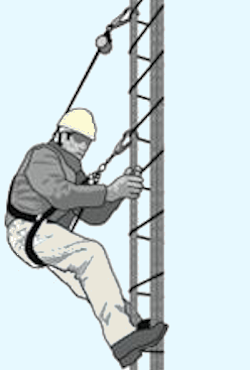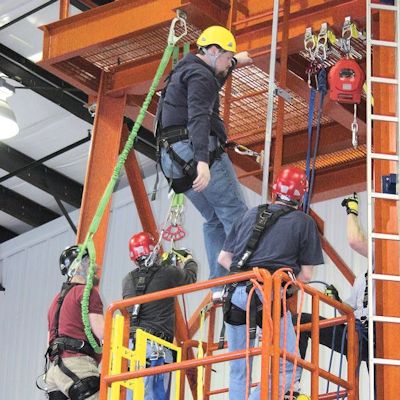Lifesaving Equipment
Personal Fall-Restraint Systems
The anchorage for a fall-restraint system must support at least 3,000 pounds or be designed and installed with a safety factor of at least two.
If you are not sure how much an anchorage will support, have a qualified person evaluate it.
Positioning Systems
Positioning systems, or work-positioning system, make it easier to work with both hands free on a vertical surface such as a wall or concrete form.
A positioning system provides support and must stop a free fall within 2 feet; a personal fall-arrest system provides no support and must limit free-fall distance to 6 feet.
Like PFASs, positioning systems have three basic "ABC" components:

- Anchorage: Positioning-device systems must be secured to an anchorage that can support at least twice the potential impact of a worker's fall or 3,000 pounds, whichever is greater.
- Body support: A body belt is acceptable as part of a positioning-device system. However, it must limit the arresting force on a worker to 900 pounds and it can only be used for body support.
- Connectors: Connectors must have a minimum strength of 5,000 pounds. Snap hooks and D-rings must be proof-tested to a minimum load of 3,600 pounds without deforming or breaking.
A full-body harness is also acceptable and must limit the arrest force to 1,800 pounds.
Belts or harnesses must have side D-rings or a single front D-ring for positioning.
Knowledge Check Choose the best answer for the question.
4-1. What is the allowed fall distance for positioning-device systems?
You forgot to answer the question!

